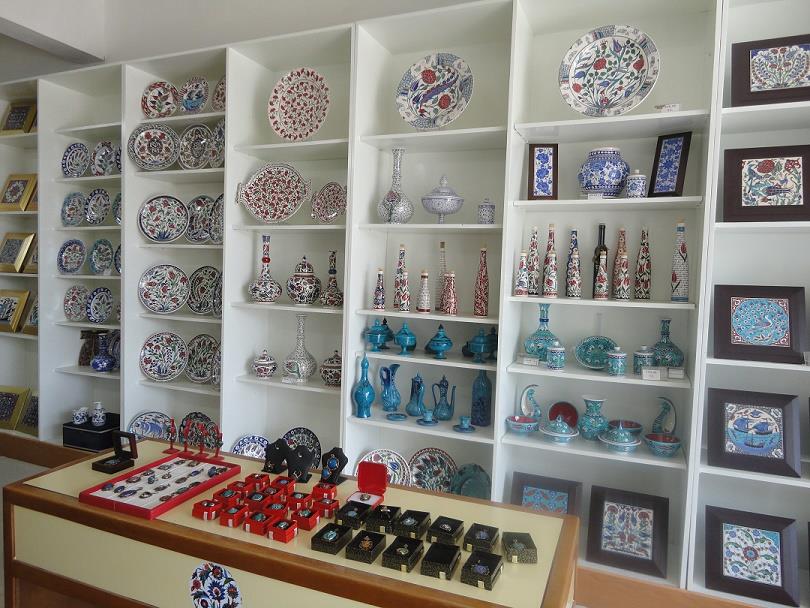
THE İZNİK POTTERY
From the middle of the 14th century to the end of the 17th century, potteries which have been created in Iznik have been called the Iznik Pottery. Iznik started producing its own potteries starting from the 15th century, and reached its golden age in the 16th and the 17th centuries. In the 17th century, the famous traveler, Evliya Çelebi, mentioned in his Seyahatname (Travel Diary) that there were more than 300 pottery kilns. On the Iznik potteries, the following flowery patterns were very much used until the 18th century ; tulips, hyacinths, pomegranates, dianthuses. From the 18th onward, the art of Iznik pottery disappeared then reappeared in the 1990’s and the production of the Iznik pottery started once again. Blue, turquoise, green and red are the most used colors in the Iznik potteries. Between the 15th and the 17th.- centuries, the Iznik potteries had an important decorative role in the Ottoman architecture and developed a lot. Potteries were used in mosques, masjids, madrasas, imarets, hamams, palaces, pavilions, fountains and libraries. Iznik potteries have a great place in the Turkish architecture and in the art of decoration. In 1993, the Iznik Education and Teaching Waqf was created in order to pass onto the next generations the knowledge about the Iznik pottery. We have no written document on the process of production of the Iznik potteries, being an art which was passed on from father to son. But the researches done by TÜBİTAK and other universities in collaboration with the waqf allowed us to find the exact same formula and techniques used 400 years ago, in the 16th century. Following this discovery, the production of potteries that the Waqf started in 1994-95 uses electrical kilns as the only technological improvement .The Uludağ University's İznik Professional High School provides a professional education in pottery kilns.